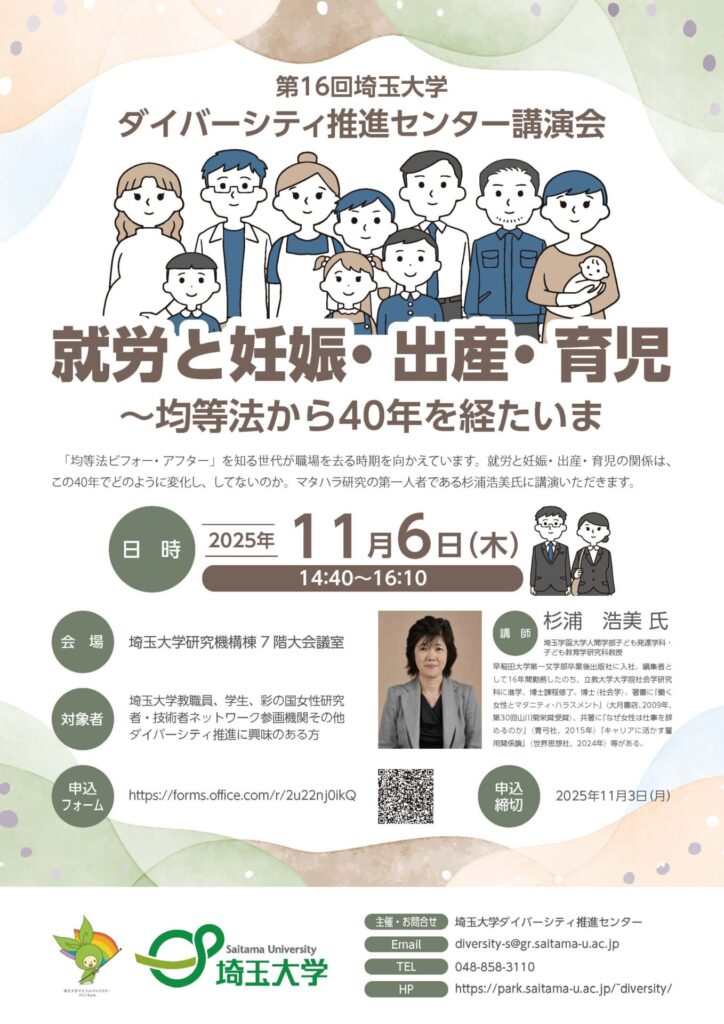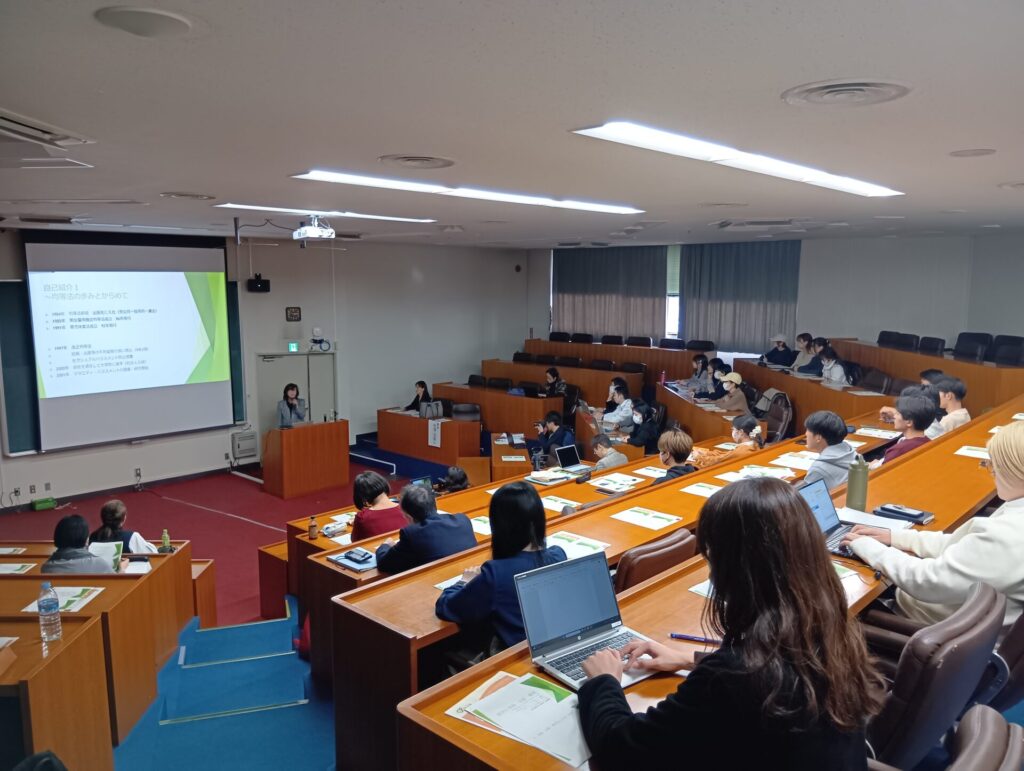Report: The 16th Saitama University Center for Gender, Diversity and Inclusion Lecture
■ Date and time: November 6, 2025 (Thu) 14:40 – 16:10
■ Method: Face-to-face
– Venue: Saitama University Research Organization Building, 7th floor, Large Conference Room
■ Sponsor: Saitama University Center for Gender, Diversity and Inclusion
■ Participants: 48
(Videos are available for a limited time only for Saitama University faculty and staff.)

On November 6, 2025, the 16th Diversity Promotion Center Lecture was held, “Working, Pregnancy, Childbirth and Childcare: 40 Years After the Equal Employment Opportunity Law.” We invited Ms. Hiromi Sugiura, a leading researcher in maternity harassment (pregnancy discrimination) and a professor at the Department of Child Development and the Graduate School of Child Education, Faculty of Human Sciences, Saitama Gakuen University, as a lecturer to talk about the 40-year history of women’s work and care.
Mr. Sugiura joined the publishing company just before the Equal Employment Opportunity Law was enacted and has 16 years of experience working as an editor. At that time, it was considered natural for new female employees to be allowed to serve tea and to clean with a rag, and even there was a blatant inequality between new male employees who passed the same employment examination. The enactment of the Child Care Leave Law in 1991 established a system of maternity and childcare leave for the first time, but only a small percentage of women were able to continue working through this system.
After that, he began to investigate the actual situation of maternity harassment in 2001, and his book “Working Women and maternity harassment” (published by Otsuki Shoten) in 2009 drew a great response. This book triggered a social debate in 2014 when “pregnancy discrimination” was selected as one of the top ten new words and buzzwords. Today, the concept of “paternity harassment” is widely recognized as a gender-neutral issue, as seen in the publication of “Dictionary of Sociology of the Family” (2024), which listed “paternity harassment” alongside “maternity harassment.”
On the other hand, the report pointed out the problem of the “L-shaped curve” where the female formal employment rate peaks in the late 20s and then declines, and the problem of women working in dangerous work environments that can be described as “risky zones” during pregnancy and childbirth. Sugiura pointed out that the past labor practices and work environment that emphasized productivity and efficiency had cut off physical care, leaving the question of “how can care be reassigned to the workplace?” Under neoliberal values, care has become more individualistic and self-responsible, and the expansion of non-regular work has made it difficult to take maternity and childcare leave.
At the end of the lecture, the need for a system that supports working while caring for others in society as a whole was emphasized, along with a warm message to the next generation. The book “Working Mothers and Stratification — The Dilemma of Work, Home Education and Diet” (Misako Nukaga and Yuiko Fujita, Keiso Shobo, 2022) and “The Theory of Employment Relations for Careers” (Tomoko Komagawa and Iku Kanai, Sekai Shiso, 2024) were also introduced, and it was an opportunity to gain a multifaceted perspective on working and caring.
The day was attended by Saitama University faculty, staff and students, as well as people from other universities who were interested in issues related to pregnancy, child birth, childcare and work, and a lively Q & A session was held. It was a time when I could feel the high level of interest in the themes surrounding work and care.
Here are some of the voices of the participants from the survey.
I was able to recognize the actual situation and reality of our country again. Male students and male staff should listen to this lecture. (Male / Adult)
I have learned that raising voices (action) is connected to the improvement of the current system. I appreciate the predecessors who have taken action so far, and I thought that my action also led to future improvement. (Female / Adult)
I was able to learn about the systems that our generation of students can use when they go out into the world and I was able to listen to a very good story. I was impressed that harassment would not go away as long as the standard was a male way of working without care. (Female / Student)


